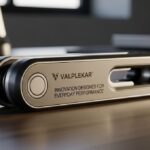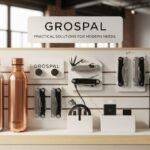With the rapid advancement of manufacturing technology, metal finishing has become a cornerstone in enhancing the functional and visual qualities of metal products. Today’s cutting-edge methods are designed to not only improve durability but also make products more efficient, sustainable, and tailored for demanding environments. Through processes like Plasma Electrolytic Oxidation and nanotechnology-derived coatings, industries are finding new pathways to traditional and future-facing challenges. To learn more about how these innovative approaches are applied, explore reputable industry providers and research their varied capabilities.
This new era in metal finishing emphasizes the need for both adaptability and precision—attributes necessary for delivering solutions across diverse sectors like aerospace, automotive, medical devices, and electronics. As new composite materials become mainstream, manufacturers increasingly rely on advanced surface engineering to optimize performance, control costs, and extend product life cycles.
Companies focused on advanced solutions are not just improving the quality and longevity of their offerings, but are also aligning with global sustainability goals by reducing waste and minimizing the environmental impact of traditional finishing methods.
Modern advances are setting higher benchmarks for corrosion resistance, surface hardness, and lightweight applications, helping industries build the resilient infrastructure and high-tech products that define the 21st century.
 Plasma Electrolytic Oxidation (PEO)
Plasma Electrolytic Oxidation (PEO)
Plasma Electrolytic Oxidation (PEO) is revolutionizing metal processing by creating extremely tough ceramic-like coatings on lightweight metals. During PEO, metals like aluminum or magnesium are submerged in an electrolyte bath, and high voltages trigger plasma micro-discharges. These discharges convert the surface into a dense, protective oxide layer, greatly enhancing wear resistance and corrosion protection, which is critical for sectors such as aerospace, transportation, and new energy technologies. For a comprehensive overview of the PEO process, including its properties and applications, refer to this detailed study: Plasma Electrolytic Oxidation (PEO) Process—Processing, Properties, and Applications.
PEO’s ability to produce uniform, customizable coatings makes it indispensable where low weight and high performance must go hand-in-hand. Coating parameters can be adjusted to achieve varied thicknesses, porosity, and hardness, allowing precise tailoring for specific operational needs. For instance, aerospace engineers regularly utilize PEO coatings on landing gear and structural parts for extended service life.
Nanotechnology-Based Coatings
The employment of nanotechnology in metal finishing unlocks performance at the smallest scales. Nanocoatings, which are only a few nanometers thick, provide significant improvements in corrosion resistance, friction reduction, and thermal stability. These coatings have a profound impact in medical, automotive, and electronics manufacturing—enabling longer-lasting products with improved functional characteristics.
Medical device manufacturers use nanocoatings to improve the biocompatibility of implants and surgical instruments, while electronics makers leverage the technology for moisture protection and electrostatic discharge mitigation. The thinness and evenness of nanocoatings ensure no compromise to product dimensions—an essential requirement in these demanding sectors.
Laser Surface Texturing
Laser surface texturing is a high-precision technique that uses focused laser beams to etch controlled micro-patterns onto metal surfaces. The resulting topography can substantially improve surface adhesion, regulate friction, and bolster wear resistance. This makes laser texturing invaluable for manufacturing high-stress engine components, aerospace parts, and specialized tooling.
Beyond improved physical performance, laser texturing can also assist with paint and adhesive applications, offering chemical-free surface activation. Manufacturers benefit from the ability to create complex, multi-scale textures that optimize lubrication or enhance cooling—critical in automotive and precision engineering. The demand for laser-based surface texturing continues to grow as industries embrace automation and zero-defect manufacturing standards.
Hydrophobic and Hydrophilic Coatings
Hydrophobic coatings form liquid-repellent surfaces, making them ideal for marine, infrastructure, and outdoor applications where moisture is a concern. By contrast, hydrophilic coatings promote water dispersion, reducing friction and fouling in medical or industrial systems. Both solutions add significant functional value by extending the serviceable life and performance of metals in aggressive use conditions.
These coatings are engineered to maintain their properties over time—supporting stringent standards for both biocompatibility in healthcare and anti-corrosive properties in harsh environments. As a result, surgeons experience improved tool performance, and engineers see reduced downtime for critical outdoor assets.
Cold Spray Technology
Cold spray technology is a breakthrough method for applying metal coatings at supersonic speeds—without substantial heat input. Fine metal particles are accelerated in a high-pressure gas stream and impact-bonded to the substrate. This process preserves the integrity of both materials, allowing repairs and coatings on heat-sensitive components that would otherwise risk deformation or heat damage.
Industries with high-value or mission-critical parts, such as aviation and defense, turn to cold spray for reliable, high-adherence repairs and composite coatings. It enables joining of dissimilar metals and is increasingly valued for restoring worn or damaged surfaces with minimal preparation, reducing environmental footprint compared to thermal spray methods.
Electroless Plating
Electroless plating offers a uniform metal covering by chemically reducing metals onto a substrate—no external electrical source required. This process ensures complete coverage of complex internal geometries, making it vital for automotive, aerospace, and electronic component manufacturing. Common applications include gears, molds, and connectors exposed to friction or corrosive agents.
Electroless plating is also recognized for its resource efficiency, using less water and fewer chemicals than classic electroplating. As industries strive to meet stricter sustainability criteria, this innovation aligns seamlessly with broader environmental objectives.
Conclusion
Modern metal finishing methods are no longer limited to improving the look of components—they are critical for ensuring product longevity, operational efficiency, and compatibility with next-generation applications. Plasma Electrolytic Oxidation, nanotechnology-based coatings, and advanced laser texturing exemplify the industry’s proactive approach to emerging industrial needs. As research evolves and technologies mature, expect new standards for durability, customization, and eco-friendly practices to redefine what’s possible in metal finishing.







